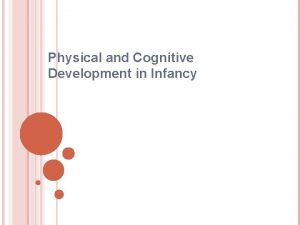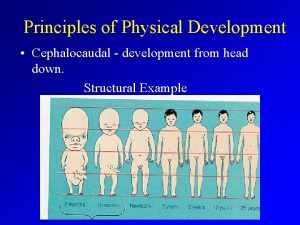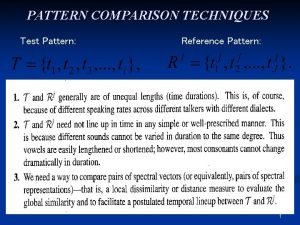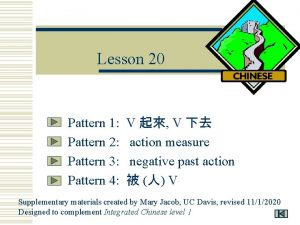1 In a cephalocaudal growth pattern which of










- Slides: 10

1. In a cephalocaudal growth pattern, which of the following is likely to grow fastest first? A. legs B. hands C. brain D. stomach

2. During the early childhood years, girls are generally _____ than boys. A. much larger B. much smaller C. slightly larger D. slightly smaller

3. The growth spurts that occurs in puberty typically happens: A. two years earlier for girls than for boys. B. two years earlier for boys than for girls. C. four years earlier for boys than for girls. D. about the same time for boys and girls.

4. James is going through puberty quite early. Research indicates that James is likely to: A. be rejected by his peers. B. have a negative self-image. C. have a positive self-image. D. become a serial killer.

5. Hormones are released: A. only during puberty. B. at the synapse between neurons. C. by the endocrine glands. D. until menopause.

5. Which brain lobe is responsible for vision? A. frontal B. occipital C. temporal D. parietal

7. The fingerlike structures of a neuron that receive input from other neurons are called: A. dendrites B. axons C. vesicles D. myelins

8. The myelin sheath is responsible for: A. releasing neurotransmitters across the synapse. B. slowing the growth of neurons during late childhood. C. speeding the electrical signal through the axon. D. reuptake of neurotransmitters that have not bound to a receiving neuron.

9. Adolescents are often characterized as impulsive and emotional. This behavior may be due to immature development in which area of the brain? A. temporal lobe B. right hemisphere C. left hemisphere D. frontal lobe

10. The process of weeding out unnecessary brain connections to allow the strengthening the important ones is known as: A. myelination B. pruning C. lateralization D. climacteric



















